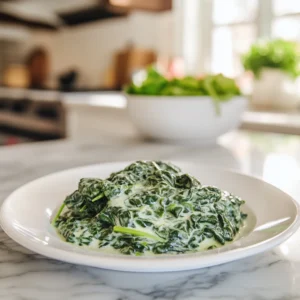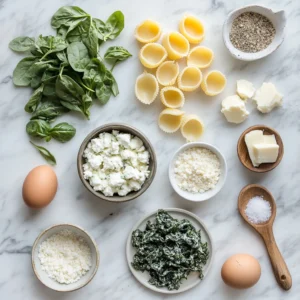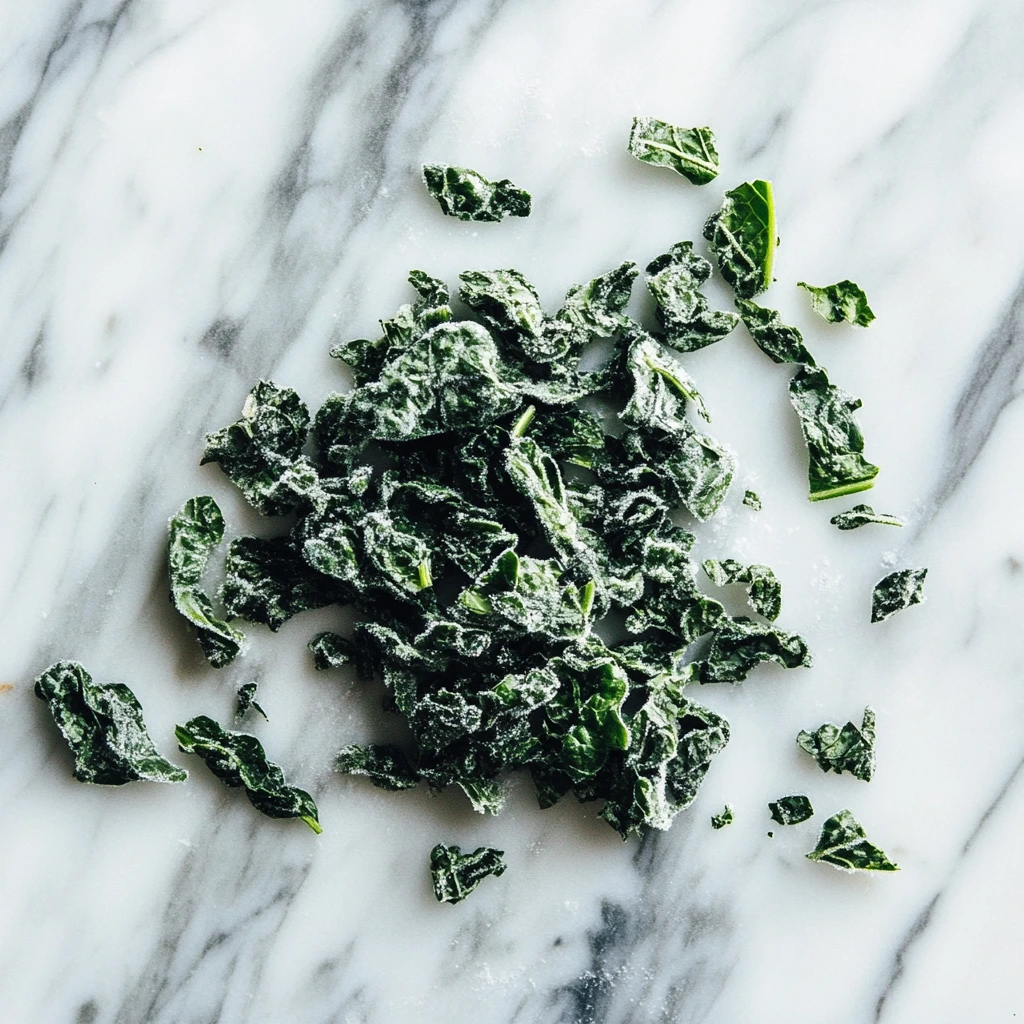Discover the versatility and convenience of frozen spinach recipes in this detailed guide. Whether you’re a busy professional or a culinary enthusiast eager to explore new flavors, frozen spinach provides a quick, nutritious, and budget-friendly solution for a variety of dishes.
In this article, we dive deep into everything you need to know—from the production process and nutritional benefits to expert cooking tips and a diverse collection of recipes. Enjoy a journey that will elevate your everyday meals with this simple, yet powerful, ingredient.
Introduction
Frozen spinach recipes have soared in popularity as more home cooks seek convenient ways to integrate healthy ingredients into their daily menus. With its long shelf life and robust nutritional profile, frozen spinach is an indispensable pantry staple. Whether you’re preparing a creamy side dish, a vibrant smoothie, or a hearty casserole, this versatile ingredient adapts to a multitude of culinary needs.
- Why Choose Frozen Spinach?
- Convenience: Ready to use with minimal preparation—no need for extensive washing or chopping.
- Cost-effective: Typically less expensive than fresh spinach, especially outside of peak seasons.
- Nutrient-rich: The freezing process locks in essential vitamins and minerals, ensuring consistent nutritional value.
For additional insights on the nutritional benefits of this leafy green, you might consider reading about the Health Benefits of Spinach.
If you’re interested in healthy cooking and meal planning, explore our articles on Healthy Crockpot Recipes: A Comprehensive Guide and Easy Weeknight Crockpot Meals. These resources offer creative ideas for slow-cooked dishes that can easily incorporate nutritious ingredients like frozen spinach.
What is Frozen Spinach?
Frozen spinach is simply fresh spinach that has been quickly blanched and then flash-frozen to preserve its nutrients, flavor, and texture. This innovative process ensures that spinach remains available year-round, providing you with a reliable source of greens even when fresh varieties are out of season.
Key Characteristics:
- Processing: The spinach is washed, blanched briefly to halt enzyme activity, and then flash-frozen to maintain its natural color and nutrients.
- Availability: Accessible in most grocery stores throughout the year, making it a dependable option for seasonal cooking.
- Usage: Ideal for incorporating into soups, casseroles, smoothies, and other frozen spinach recipes where texture adjustments can be made during preparation.
Understanding the production process of frozen spinach can help you appreciate its value in terms of both convenience and nutritional integrity. For a deeper dive into the nutritional composition of spinach, refer to the USDA Spinach Nutritional Data.
Nutritional Value and Health Benefits
Despite the freezing process, frozen spinach retains a remarkable amount of nutrients, making it a smart choice for health-conscious cooks. This leafy green is a powerhouse of vitamins, minerals, and antioxidants that support a balanced diet.
Nutritional Breakdown:
- Vitamins: Loaded with vitamins A, C, and K, essential for vision, immune function, and bone health.
- Minerals: An excellent source of iron, calcium, and magnesium, which support overall wellness.
- Antioxidants: Contains compounds that help combat oxidative stress and reduce inflammation.
Health Benefits:
- Heart Health: The antioxidants and minerals in spinach can help maintain a healthy cardiovascular system.
- Bone Strength: With abundant vitamin K, frozen spinach plays a role in promoting strong and healthy bones.
- Immune Support: The blend of vitamins and minerals boosts immune function and contributes to overall well-being.
Using frozen spinach in your recipes is an excellent way to ensure that you are getting a steady supply of essential nutrients, regardless of the season.
For more details on food safety when handling frozen ingredients, check out the FDA Food Safety Guidelines for Frozen Foods and additional tips from FoodSafety.gov – Food Safety Tips.
Essential Cooking Techniques and Tips
Mastering the proper techniques when using frozen spinach is key to achieving delicious results. Even though this ingredient is pre-cooked by freezing, proper preparation can make all the difference in your final dish.
Thawing and Draining:
- Step-by-Step Guide:
- Remove the Package: Take the frozen spinach out of the packaging.
- Thawing: Allow the spinach to thaw in a colander at room temperature or in the refrigerator overnight.
- Draining: Squeeze out the excess water using a clean kitchen towel or paper towels. This step is crucial to prevent watery dishes.
Cooking Methods:
- Sautéing: Quickly stir-fry thawed spinach with garlic, olive oil, or a touch of butter for a simple side dish.
- Steaming: Lightly steam to preserve its nutrient content and texture.
- Baking: Incorporate into casseroles, quiches, or stuffed pasta shells without compromising flavor.
Flavor Enhancement:
- Seasonings: Enhance your dish with garlic, onions, nutmeg, or a squeeze of lemon juice.
- Herbs and Spices: Experiment with basil, oregano, or dill to create unique flavor profiles.
Common Pitfalls:
- Overcooking: Avoid prolonged cooking to prevent the spinach from becoming mushy.
- Inadequate Draining: Ensure that all excess moisture is removed to maintain the right texture in your recipes.
For those looking to sharpen their kitchen skills, consider reading our guide on How to Sharpen a Knife: A Comprehensive Guide. A well-sharpened knife not only makes food preparation easier but also enhances safety and efficiency in the kitchen.
A Collection of Easy Frozen Spinach Recipes
Below are several simple yet scrumptious frozen spinach recipes that cater to a variety of tastes and occasions. Each recipe is designed to be straightforward, adaptable, and packed with flavor.
Recipe

Creamed Spinach
Equipment
- Skillet
- Colander
Ingredients
- 1 package frozen spinach approx. 10 oz
- 2 tbsp butter
- 2 cloves garlic minced
- 1 cup heavy cream or substitute half-and-half for a lighter version
- nutmeg a pinch
- salt and pepper to taste
Instructions
- Thaw the spinach in a colander, then squeeze out as much water as possible.
- In a large skillet, melt the butter over medium heat.
- Add the minced garlic and sauté until fragrant (about 1 minute).
- Stir in the spinach and cook for 2-3 minutes.
- Pour in the heavy cream and add a pinch of nutmeg. Stir to combine.
- Simmer on low heat for an additional 5 minutes until the mixture thickens slightly.
- Season with salt and pepper to taste.
Notes
Spinach and Feta Stuffed Pasta Shells

Ingredients:
- 20 jumbo pasta shells
- 1 package of frozen spinach (10 oz), thawed and drained
- 1 cup of ricotta cheese
- 1 cup of crumbled feta cheese
- 1 egg, lightly beaten
- 1/2 cup of grated Parmesan cheese
- 1 teaspoon dried oregano
- Salt and pepper to taste
- 2 cups of marinara sauce
- Fresh basil leaves for garnish (optional)
Method:
Preparation:
- Preheat your oven to 375°F (190°C).
- Cook the pasta shells according to package instructions until al dente. Drain and set aside.
- In a large bowl, combine the thawed and well-drained spinach, ricotta, feta, egg, Parmesan, oregano, salt, and pepper.
Assembly:
- Spread a thin layer of marinara sauce on the bottom of a baking dish.
- Fill each pasta shell with the spinach and cheese mixture and arrange them in the dish.
- Pour the remaining marinara sauce evenly over the shells.
Baking:
- Cover the dish with foil and bake for 25 minutes.
- Remove the foil and bake for an additional 10 minutes until the cheese is bubbly.
- Garnish with fresh basil leaves before serving.
- Serving Suggestion: Serve with a crisp green salad and crusty bread for a complete meal.
Spinach Smoothie
- Ingredients:
- 1 package of frozen spinach (about 5 oz)
- 1 ripe banana
- 1/2 cup almond milk (or your favorite milk alternative)
- 1/2 cup Greek yogurt
- 1 tablespoon honey or maple syrup
- Ice cubes (optional, for a thicker consistency)
- Method:
- Preparation: Place the frozen spinach and banana in a blender.
- Blending:
- Add the almond milk, Greek yogurt, and honey.
- Blend until smooth. If you prefer a thicker smoothie, add a few ice cubes and blend again.
- Taste and adjust the sweetness if necessary.
- Serving Suggestion: Pour into a glass and enjoy as a nutritious breakfast or a post-workout snack.
Spinach and Mushroom Quiche

Ingredients:
- 1 pre-made pie crust
- 1 package of frozen spinach (10 oz), thawed and drained
- 1 cup sliced mushrooms
- 4 large eggs
- 1 cup shredded cheese (such as Swiss, cheddar, or a blend)
- 1/2 cup milk or cream
- 1 small onion, finely chopped
- 1 garlic clove, minced
- Salt, pepper, and herbs (such as thyme or parsley) to taste
Method:
Preparation:
- Preheat your oven to 375°F (190°C).
- In a skillet, sauté the chopped onion and garlic in a little oil until soft.
- Add the sliced mushrooms and cook until they begin to brown. Remove from heat.
Filling:
- In a bowl, whisk together the eggs, milk (or cream), salt, pepper, and herbs.
- Stir in the thawed and drained spinach and the sautéed mushroom mixture.
- Fold in the shredded cheese.
Assembly:
- Place the pre-made pie crust in a quiche pan or pie dish.
- Pour the filling into the crust and spread evenly.
Baking:
- Bake in the preheated oven for 35-40 minutes, or until the quiche is set and the top is lightly golden.
- Allow to cool for a few minutes before slicing.
Serving Suggestion: Serve warm or at room temperature as a satisfying brunch or light dinner.
If you’re interested in mixing vegetables creatively, explore our Delicious Stuffed Zucchini Recipes.
Advanced Recipe Variations and Creative Uses
For those looking to elevate their culinary creations, here are some innovative twists on classic frozen spinach recipes that bring a new dimension to your meals.
- Fusion Dishes:
- Spinach Curry: Combine thawed spinach with Indian spices, coconut milk, chickpeas, and tomatoes for a warming, aromatic curry.
- Spinach Lasagna: Layer spinach with pasta sheets, ricotta, and tomato sauce for a hearty and comforting dish.
- Creative Meal Ideas:
- Soups and Stews: Add a handful of spinach to enrich the flavor and nutritional content of vegetable soups and stews.
- Casseroles: Mix spinach with grains, beans, and roasted vegetables to create a filling one-dish meal.
- Dietary Adaptations:
- Vegan Options: Use plant-based cream or cheese alternatives to craft vegan-friendly recipes.
- Gluten-Free Choices: Opt for gluten-free pasta or crusts when preparing casseroles or quiches.
- Low-Calorie Recipes: Reduce added fats and incorporate more vegetables for lighter, nutrient-dense meals.
For further details on cooking appliances and methods, you might also enjoy our article The Difference Between Slow Cooker and Crockpot, which explores the nuances between these two popular cooking tools.
Tips for Buying, Storing, and Maximizing Quality
Choosing the right frozen spinach and storing it correctly are key to preserving its flavor and nutritional benefits. Here are some tips to ensure your spinach stays at its best:
- Buying Quality Frozen Spinach:
- Check the Packaging: Look for brands that use minimal added water and offer clear expiration dates.
- Freshness: Choose products with a recent packaging date to guarantee optimal quality.
- Storing Guidelines:
- Freezer Storage: Store spinach in a dedicated freezer compartment, ideally at a consistent temperature.
- Avoid Frequent Openings: Limit the time the freezer door is open to prevent temperature fluctuations.
- Maximizing Texture and Flavor:
- Proper Thawing: Thaw slowly in a colander or refrigerator to retain texture.
- Draining: Squeeze out all excess water to prevent diluted flavors and soggy dishes.
For further insights on proper storage and ingredient selection, see our detailed article on Proper Food Storage Tips and our guide on Essential Cooking Techniques.
Frequently Asked Questions (FAQs)
Below are some common questions about frozen spinach recipes along with concise answers to help you master this ingredient.
-
What is the Best Way to Thaw Frozen Spinach?
Allow it to thaw in a colander at room temperature or overnight in the refrigerator. Then, press out the excess water using a clean towel or cheesecloth. -
Can Frozen Spinach Be Used in Place of Fresh Spinach?
Yes, particularly in recipes where texture is less critical, such as smoothies, casseroles, or soups. -
How Long Does Frozen Spinach Last in the Freezer?
Typically, it can be stored for 8-12 months if kept at a consistent freezing temperature. -
Are There Nutritional Differences Between Frozen and Fresh Spinach?
While some nutrient loss may occur during freezing, frozen spinach remains a nutritious and viable alternative. -
How Do I Remove Excess Water from Thawed Spinach?
Use a clean towel or cheesecloth to firmly squeeze out as much moisture as possible. -
Additional Queries:
- How can I use frozen spinach in smoothies?
Blend it directly into your smoothie along with fruits and other vegetables to boost the nutritional content. - What are the best spices to pair with spinach?
Experiment with garlic, nutmeg, and a squeeze of lemon to enhance the natural flavor of the spinach.
- How can I use frozen spinach in smoothies?
Conclusion
In summary, frozen spinach recipes offer a practical and nutritious way to elevate your meals. By understanding the production, nutritional benefits, and proper cooking techniques of frozen spinach, you can create dishes that are both healthy and delicious.
- Key Takeaways:
- Frozen spinach is a convenient, nutrient-dense ingredient ideal for a wide range of dishes.
- Proper preparation and cooking techniques are essential for achieving the best texture and flavor.
- Experiment with a variety of recipes—from creamy sides and savory casseroles to hearty quiches and smoothies—to discover your favorites.

